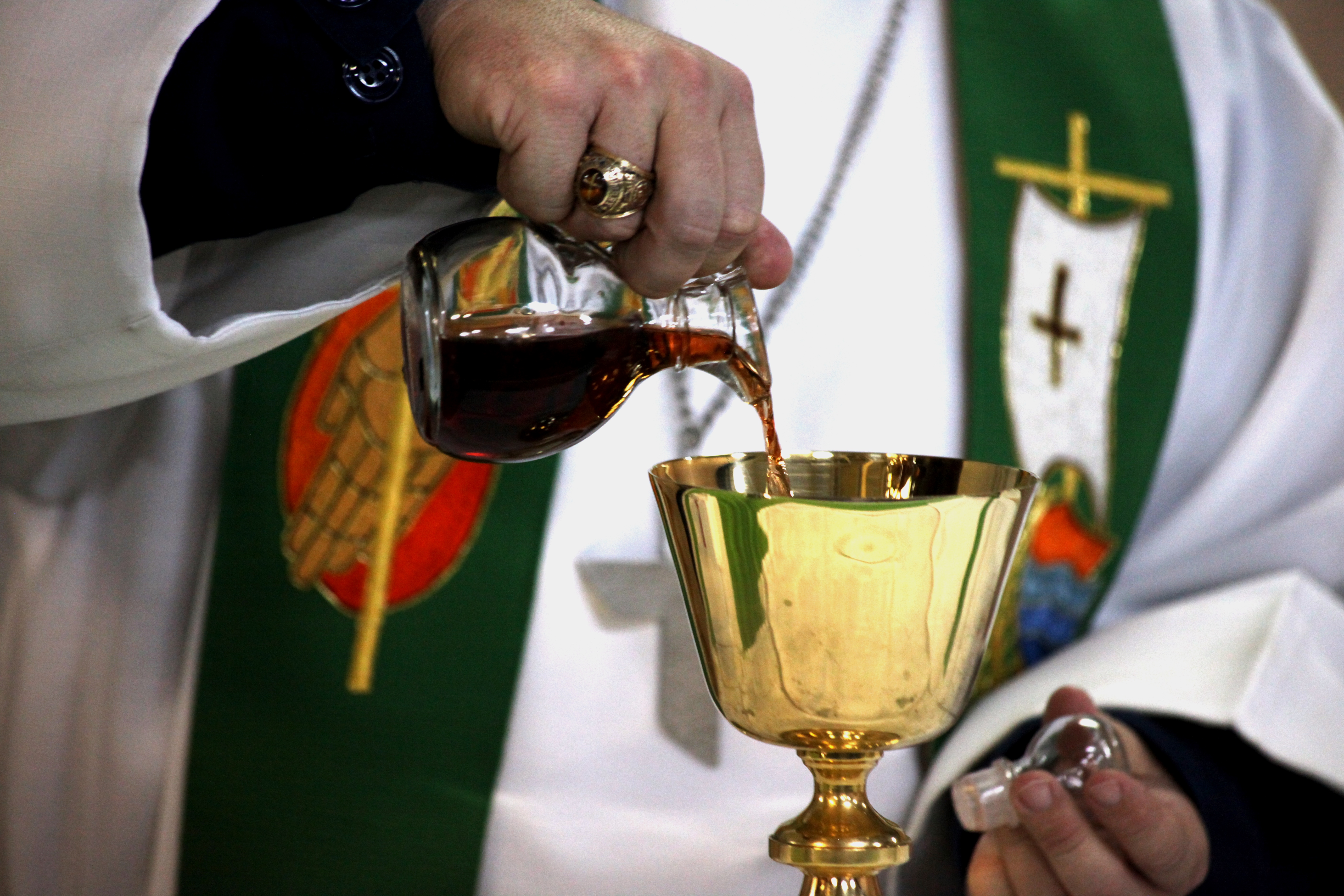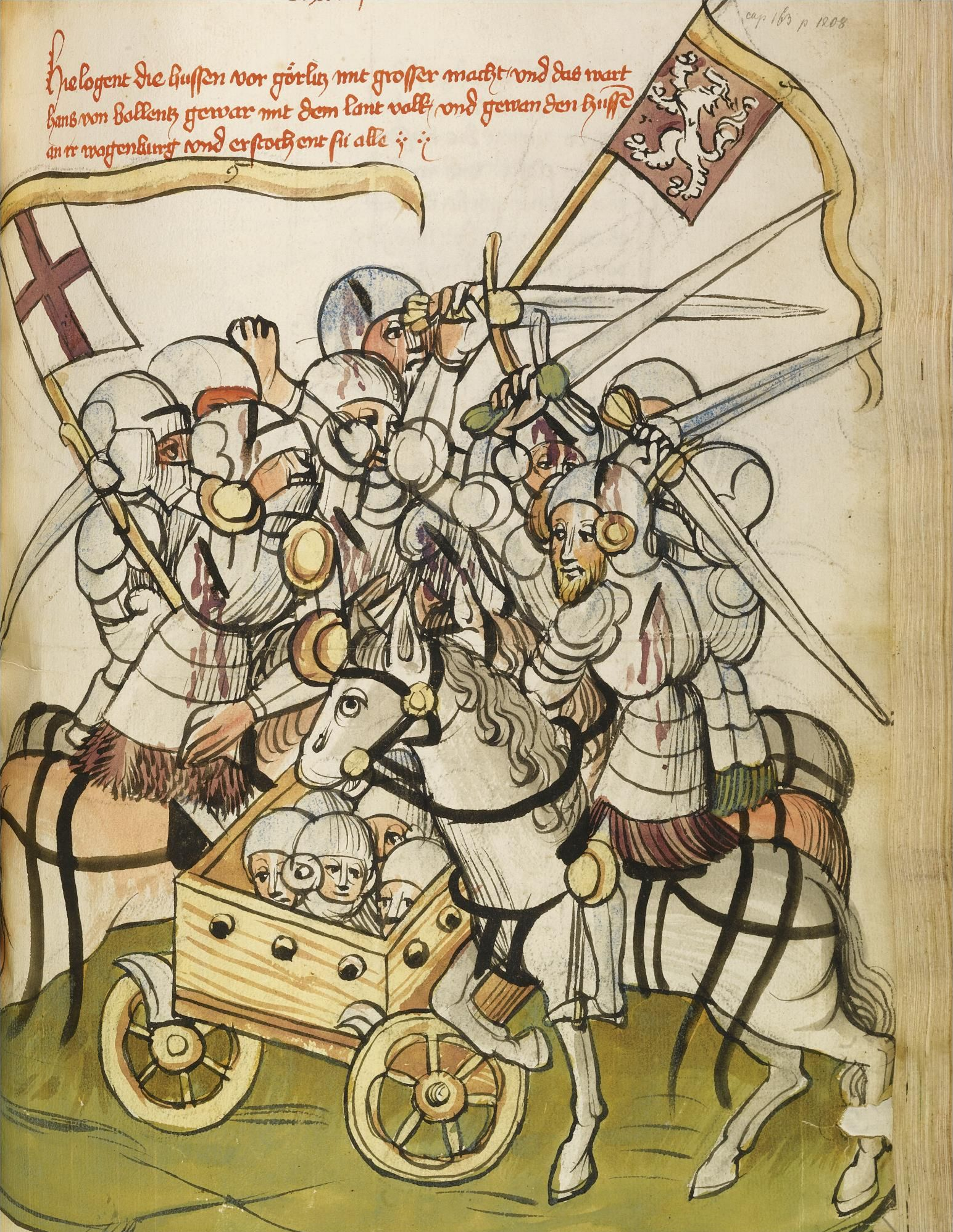|
Basel Compacts
The Compacts of Basel, also known as Basel Compacts or ''Compactata'', was an agreement between the Council of Basel and the moderate Hussites (or Utraquists), which was ratified by the Estates of Bohemia and Moravia in Jihlava on 5 July 1436. The agreement authorized Hussite priests to administer the sacramental wine to laymen during the Eucharist The Eucharist (; from Greek , , ), also known as Holy Communion and the Lord's Supper, is a Christian rite that is considered a sacrament in most churches, and as an ordinance in others. According to the New Testament, the rite was instit .... The Council of Basel ratified the document on 15 January 1437, but it acknowledged that the communion under both kinds was not heretical only on 23 December. References Sources * * * * Hussite history 1436 in Europe {{Christianity-stub ... [...More Info...] [...Related Items...] OR: [Wikipedia] [Google] [Baidu] |
Council Of Basel
The Council of Florence is the seventeenth ecumenical council recognized by the Catholic Church, held between 1431 and 1449. It was convoked as the Council of Basel by Pope Martin V shortly before his death in February 1431 and took place in the context of the Hussite Wars in Bohemia and the rise of the Ottoman Empire. At stake was the greater conflict between the conciliar movement and the principle of papal supremacy. The Council entered a second phase after Emperor Sigismund's death in 1437. Pope Eugene IV convoked a rival Council of Ferrara on 8 January 1438 and succeeded in drawing some of the Byzantine ambassadors who were in attendance at Basel to Italy. The remaining members of the Council of Basel first suspended him, declared him a heretic, and then in November 1439 elected an antipope, Felix V. After becoming the Council of Florence (having moved to avoid the plague in Ferrara), the Council concluded in 1445 after negotiating unions with the various eastern c ... [...More Info...] [...Related Items...] OR: [Wikipedia] [Google] [Baidu] |
Hussites
The Hussites ( cs, Husité or ''Kališníci''; "Chalice People") were a Czech proto-Protestant Christian movement that followed the teachings of reformer Jan Hus, who became the best known representative of the Bohemian Reformation. The Hussite movement began in the Kingdom of Bohemia and quickly spread throughout the remaining Lands of the Bohemian Crown, including Moravia and Silesia. It also made inroads into the northern parts of the Kingdom of Hungary (now Slovakia), but was rejected and gained infamy for the plundering behaviour of the Hussite soldiers.Spiesz ''et al.'' 2006, p. 52.Kirschbaum 2005, p. 48. There were also very small temporary communities in Poland-Lithuania and Transylvania which moved to Bohemia after being confronted with religious intolerance. It was a regional movement that failed to expand anywhere farther. Hussites emerged as a majority Utraquist movement with a significant Taborite faction, and smaller regional ones that included Adamites, Orebites ... [...More Info...] [...Related Items...] OR: [Wikipedia] [Google] [Baidu] |
Utraquism
Utraquism (from the Latin ''sub utraque specie'', meaning "under both kinds") or Calixtinism (from chalice; Latin: ''calix'', mug, borrowed from Greek ''kalyx'', shell, husk; Czech: kališníci) was a belief amongst Hussites, a reformist Christian movement, that communion under both kinds (both bread and wine, as opposed to the bread alone) should be administered to the laity during the celebration of the Eucharist. It was a principal dogma of the Hussites and one of the Four Articles of Prague. After the Hussite movement split into various factions early in the Hussite Wars, Hussites that emphasized the laity's right to communion under both kinds became known as Moderate Hussites, Utraquist Hussites, or simply Utraquists. The Utraquists were the largest major Hussite faction. Following the victory of allied Utraquist and Catholic forces in the Hussite Wars, Utraquists constituted a majority of the Bohemian population until the outbreak of the Thirty Years' War, nearly two centuri ... [...More Info...] [...Related Items...] OR: [Wikipedia] [Google] [Baidu] |
Jihlava
Jihlava (; german: Iglau) is a city in the Czech Republic. It has about 50,000 inhabitants. Jihlava is the capital of the Vysočina Region, situated on the Jihlava River on the historical border between Moravia and Bohemia. Historically, Jihlava is the oldest mining town in the Czech Republic, older than Kutná Hora. The historic centre of Jihlava is well preserved and is protected by law as an urban monument reservation. Administrative division Jihlava is made up of 17 administrative parts: *Jihlava *Horní Kosov *Staré Hory *Antonínův Důl *Červený Kříž *Helenín *Henčov *Heroltice *Hosov *Hruškové Dvory *Kosov *Pávov *Popice *Pístov *Sasov *Vysoká *Zborná Etymology The origin of the city's name (Iglau in German) is unclear. Most common theory has it derived from the German word ''Igel'', meaning "hedgehog", usually in reference to the city's coat of arms. However, the name was in use since before the symbol of a hedgehog was. It is more likely the city is na ... [...More Info...] [...Related Items...] OR: [Wikipedia] [Google] [Baidu] |
Sacramental Wine
Sacramental wine, Communion wine, altar wine, or wine for consecration is wine obtained from grapes and intended for use in celebration of the Eucharist (also referred to as the Lord's Supper or Holy Communion, among other names). It is usually consumed after sacramental bread. History Wine was used in the earliest celebrations of the Lord's Supper. Paul the Apostle writes in 1 Corinthians 10:16: In the Early Church, both clergy and laity received the consecrated wine by drinking from the chalice, after receiving a portion of the consecrated bread. Due to many factors, including the difficulty of obtaining wine in Northern European countries (where the climate was unsuitable for viticulture), drinking from the chalice became largely restricted in the West to the celebrating priest, while others received communion only in the form of bread. This also reduced the symbolic importance of choosing wine of red colour. Eastern Churches in full communion with the Holy See continued ... [...More Info...] [...Related Items...] OR: [Wikipedia] [Google] [Baidu] |
Eucharist
The Eucharist (; from Greek , , ), also known as Holy Communion and the Lord's Supper, is a Christian rite that is considered a sacrament in most churches, and as an ordinance in others. According to the New Testament, the rite was instituted by Jesus Christ during the Last Supper; giving his disciples bread and wine during a Passover meal, he commanded them to "do this in memory of me" while referring to the bread as "my body" and the cup of wine as "the blood of my covenant, which is poured out for many". The elements of the Eucharist, sacramental bread ( leavened or unleavened) and wine (or non-alcoholic grape juice), are consecrated on an altar or a communion table and consumed thereafter, usually on Sundays. Communicants, those who consume the elements, may speak of "receiving the Eucharist" as well as "celebrating the Eucharist". Christians generally recognize a special presence of Christ in this rite, though they differ about exactly how, where, and when Chr ... [...More Info...] [...Related Items...] OR: [Wikipedia] [Google] [Baidu] |
Communion Under Both Kinds
Communion under both kinds in Christianity is the reception under both "species" (i.e., both the consecrated bread and wine) of the Eucharist. Denominations of Christianity that hold to a doctrine of Communion under both kinds may believe that a Eucharist which does not include both bread and wine as elements of the religious ceremony is not valid, while others may consider the presence of both bread and wine as preferable, but not necessary, for the ceremony. In some traditions, grape juice may take the place of wine with alcohol content as the second element. Roman Catholicism Doctrine In reference to the Eucharist as a sacrifice, Communion under both kinds belongs at least to the integrity and essence, of the rite, and may not be omitted without violating the precept of Christ: "Do this in remembrance of me" (Luke 22:19). This is mentioned implicitly by the Council of Trent (Sess. XXI, c. i; XXII, c. i), and the General Instruction of the Roman Missal states that the people " ... [...More Info...] [...Related Items...] OR: [Wikipedia] [Google] [Baidu] |
Hussite History
The Hussites ( cs, Husité or ''Kališníci''; "Chalice People") were a Czech proto-Protestant Christian movement that followed the teachings of reformer Jan Hus, who became the best known representative of the Bohemian Reformation. The Hussite movement began in the Kingdom of Bohemia and quickly spread throughout the remaining Lands of the Bohemian Crown, including Moravia and Silesia. It also made inroads into the northern parts of the Kingdom of Hungary (now Slovakia), but was rejected and gained infamy for the plundering behaviour of the Hussite soldiers.Spiesz ''et al.'' 2006, p. 52.Kirschbaum 2005, p. 48. There were also very small temporary communities in Poland-Lithuania and Transylvania which moved to Bohemia after being confronted with religious intolerance. It was a regional movement that failed to expand anywhere farther. Hussites emerged as a majority Utraquist movement with a significant Taborite faction, and smaller regional ones that included Adamites, Orebites ... [...More Info...] [...Related Items...] OR: [Wikipedia] [Google] [Baidu] |
.jpg)





